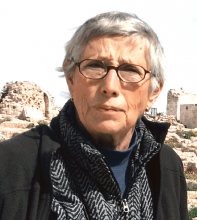You are here
Deir Yassin, over and over again
Apr 12,2017 - Last updated at Apr 12,2017
On April 9, Palestinians in the West Bank, East Jerusalem, Gaza and the diaspora commemorated 69 years since the Deir Yassin massacre, when scores of Palestinians were killed by Zionist militias after Israel’s underground army, the Haganah, encircled the village.
Bodies were left in the streets and thrown down wells while survivors, mainly women and children, were herded into lorries and paraded around Jerusalem.
According to some reports, they had been stripped naked to humiliate them and instil a feeling of defeat among Palestinians as a whole.
The number of victims has always been disputed.
Palestinian historian Aref Al Aref estimated that 117 had been killed while the International Committee of the Red Cross representative Jacques de Reynier said 150 corpses, some decapitated or disembowelled, had been recovered from one well alone.
The militias involved, the Irgun Zvai Leumi and the Stern Gang (Lehi), claimed 254 had been slain.
Before the massacre the village had 600 inhabitants.
The massacre had two objectives: to break the hold by Arab irregulars on the main road to Jerusalem and terrorise the Palestinian population into fleeing their towns and villages once Israeli forces approached.
Early in the morning on April 8, the head of the main Palestinian resistance forces Abdel Qader Al Husseini was killed at Qastel, which his forces had briefly captured from the Haganah.
Zionist shock troops in the Palmach retook the village on the night of April 8-9.
Husseini’s death decapitated the resistance while the fall of Qastel and the massacre of Deir Yassin demoralised Palestinian fighters and enabled the Zionists to achieve their objectives.
The attacks on Qastel and Deir Yassin belonged to Operation Nachshon, which was designed to open the road to Jerusalem to resupply forces there.
Nachshon was launched by the Haganah on April 6 in the Latroun area; it was part of Plan Dalet (D), the Zionist plan to secure Jewish cities, towns and settlements, and conquer Palestinian towns and villages within the areas granted the Jewish state under the UN partition plan of November 1947.
Plan Dalet also provided for the seizure of Palestinian towns and villages outside the boundaries of the Jewish state and for the expulsion of their inhabitants.
The Plan D offensive was made possible by the arrival, on April 1, of the initial instalment of Czech arms that were unloaded in Haifa and Tel Aviv.
At that time, the Haganah was primed to launch its campaign to take territory and destroy Palestinian paramilitary organisations were based on the traditional “faza’ah” or “call of support” that required villagers and townsmen to join forces operating in their localities.
By destroying Palestinian towns and villages, the Haganah and Palmach essentially finished off the resistance.
Plan D was also designed to fuse Jewish settlements outside the area allocated to the Jewish state to territory that fell under Jewish control and make preparations for defence against an expected assault by the Arab armies.
The most important aspect of Plan D was that it was conducted before the proclamation of the Jewish state on May 15.
By that time, 250,000-300,000 Palestinians had been driven from or fled their homes.
The refugees later created difficulties for the Arab armies seeking to halt the advance of the Zionist forces.
The Zionists adopted a policy of expulsion because at the time of the partition resolution, there were 1.3 million Palestinians and 700,000 Jews in Palestine.
By November 1948, there were 160,000 Palestinians living in the 78 per cent of Palestine conquered by Israel.
Under the partition plan, the population of Israel would have been 55 per cent Jewish and 45 per cent Palestinian, an unacceptable outcome for the Zionists who wanted a state where the population was overwhelmingly Jewish.
Furthermore, Palestinians owned 93 per cent of the land in Palestine, Zionists 7 per cent.
While the Zionists were awarded 55 per cent of Palestine, they owned only 25 per cent of the agricultural land in Israel.
At the end of the war, 750,000 Palestinians were homeless and the lands of those who were expelled were expropriated on the basis that they were absent.
Until proven otherwise, the Zionists had refused to admit that their forces had expelled the Palestinians.
On the one hand, the Zionists claimed that Palestinians were told to leave by the Arab leaders so their armies could fight the Jewish forces without harming Palestinian civilians.
On the other, the Zionists argued that Palestinians heard about Deir Yassin and, fearing death, fled.
Both these claims were propaganda meant to mislead and exculpate the Zionists.
The Arabs who intervened after May 15 did not ask the Palestinians to leave. This was proven by Ersikne Childers and Walid Khaladi in the 1960s.
Palestinians did not flee due to Deir Yassin.
They were forced to leave because Israeli forces had adopted a policy of ethnic cleansing involving violent expulsions and the destruction of Palestinian villages.
Israeli scholars Benny Morris and Ilan Pappe have dug into the archives and corrected the record.
UN mediator Count Folke Bernadotte attempted to confront Israel on its policy of ethnic cleansing by calling for the repatriation and compensation for the Palestinian refugees.
He was assassinated on September 17, 1948, by members of the Stern Gang, which had also participated in the Deir Yassin massacre.
The assassination was ordered by the three-man leadership of the gang, Yitzak Shamir, Natan Yellin-Mor and Yisrael Eldad.
Both Shamir and Irgun’s leader Menachem Begin became prime ministers of Israel.
Begin was in office when Israel invaded Lebanon and the Israeli army surrounded the Sabra and Shatilla Palestinian “camps” south of Beirut and introduced Phalangist militiamen who massacred hundreds of men, women and children: the Deir Yassin model once again.













